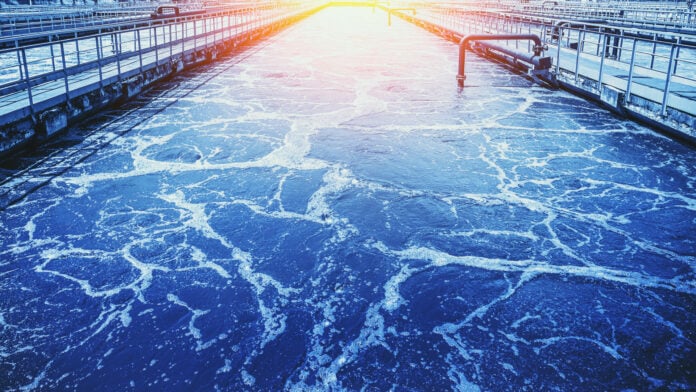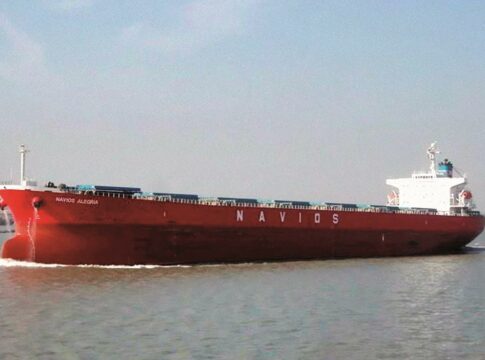Prof. Fani Sakellariadou
Professor at the University of Piraeus, Dept of Maritime Studies, geochemist oceanographer, IUPAC
On 11th March 2011, a magnitude-9 earthquake occurred in the Pacific Ocean about 80 miles east of the Japanese city of Sendai. It triggered a towering tsunami that reached the coastline and seriously damaged the Fukushima Daiichi Nuclear Power Plant (FDNPP).
Cooling water injected with molten damaged cores after the accident, as well as groundwater and rainwater seeping into the reactor consist contaminated wastewater (IAEA, 2015). Contaminated wastewater from FDNPP has undergone a decontamination process, treated by multi-nuclide removal equipment (Advanced Liquid Processing System, ALPS) to reduce 62 types of nuclides from the contaminated water to less than or equal to the regulatory concentrations and then stored in tanks at the site.
In 2013, the Japanese government proposed several solutions for the contaminated wastewater fate, including geosphere injection, vapor release, and directly releasing Fukushima’s water into the Pacific Ocean. At present, the Fukushima Daiichi site is crowded with more than 1,000 towering storage tanks. On 13th of April 2021, the Japanese government officially approved Fukushima Daiichi’s proposal to release 1.3 million tons of the nuclear-contaminated water into the sea over course of 30 years (Xidi Chen and Qi Xu, 2022; Lu et al, 2021).
Even though nuclear power plants routinely discharge wastewater into the ocean in accordance with specific regulatory authorizations based on safety and environmental impact assessments, the Fukushima Nuclear Accident’s discharge of such a significant volume stands out from the way that general nuclear power plants typically operate.
Great opposition and concerns have been raised internationally because of the ecotoxicological features of radioactive materials and their harmful and long-term impacts on the environment.
The decontamination process is not perfect. The Tokyo Electric Power Company Holdings, incorporated (TEPCO) insisted for years that there was only tritium left in the tanks. In October 2018, TEPCO admitted that the nuclear wastewater contained other radioactive materials apart from tritium, such as 106Ru, 60Co and 90Sr. Although the concentration of these isotopes is lower than that of tritium, they are more likely to remain on the seafloor and more easily accumulated in marine life (Buesseler, 2020; Oceanus).
Tritium, 3H, is a radioisotope of hydrogen with a 12.3-year half-life. It is the greatest concern in Japan’s nuclear wastewater discharge. Tritium replaces hydrogen atoms in water molecules and therefore it is very difficult to remove it even though the ALPS process (Shozugawa et al., 2020). Once in the environment, tritium reacts with oxygen and is quickly integrated into numerous cycles of the biosphere as tritiated water (HTO). It is extremely mobile in the environment and in all biological systems, (Ferreira et al., 2023). Tritium present in seawater, can become incorporated in organic compounds. Organic bound tritium is formed in aquatic plants through photosynthesis, then appears in fish and shellfish through ingestion (Yankovich et al., 2011). Consequently, tritium may accumulate in the food web (de With et al., 2021). The effects of tritiated water and organically bound tritium on humans have not yet been thoroughly studied. Some evidence suggests that exposure to elevated levels of tritium can pose a risk of cancer or genetic defects (Fairlie et al., 2014).
Radioisotopes with longer half-life, like 14C, 106Ru, 60Co, and 90Sr, often escape from the ALPS treatment and still exist in the treated wastewater, which can more easily enter marine sediments and be absorbed by marine organisms. These radioisotopes impose a potential threat to the marine environment and public health (Buesseler, 2020; Shozugawa et al., 2020; Normile, 2021; Zhao et al., 2021).
The concentration of 14C is also high in the treated wastewater (The Korea Times, 2021). Since it has a 5730-year half-life, it is also of concern as it may enter the biosphere and accumulate in marine ecosystems (Williams et al., 2010). 14C integrated in cellular components (proteins, nucleic acids), particularly cellular DNA.
106Ru poses a long-term radiation risk to the environment and it is more easily incorporated into marine biota or sediments at high concentration factors (Buesseler, 2020). 60Co is another kind or radioisotope that emits gamma rays which can penetrate the human body and damage the cells (Khajeh et al., 2017). 90Sr has a chemical behavior like that of calcium and it can accumulate in organisms, particularly in bones, increasing the osteosarcoma and leukemia risk (Khani et al., 2012).
Despite the large volume of the ocean and its complex current system leading to a significant dilution and dispersion of radioactive materials, it is well recognized that radionuclides with long half-life will still exist in the marine environment for a long time (Men et al., 2017), causing major consequences to the natural environment, the marine life, and the human health (Liu et al., 2021).
The behavior of radioactive materials in the ocean depends on their chemical properties. Soluble radionuclides are dispersed. Radionuclides may react with molecules or bound to particulates. They can be suspended in the sea water and if larger and heavier they may sink on the seafloor.
A major concern about the deliberate release of radioactive materials into the sea is the lack of information and knowledge. It is necessary to thoroughly evaluate and monitor any potential effects of the proposed discharge of Fukushima nuclear wastewater in the Pacific Ocean. Moreover, it is necessary to elaborate studies on the potential discharge alternatives including a comparison of their radiological impacts. As an alternative it was suggested (Buesseler, 2020) that additional tanks could be built in the adjacent area to allow some of the contaminants with shorter half-lives to decay. However, there are worries that another significant earthquake could fracture the tanks and result in uncontrolled leaks.
The 2030 UN Agenda for Sustainable development promotes the creation of inclusive and equitable societies. The voice of local communities and indigenous peoples should be considered seriously. For them, fishing activities are vital. Local Japanese fishers and coastal communities are very anxious. Additionally, neighboring countries, like China, South Korea and Taiwan, as well as Pacific Island countries and the Pacific Islands Forum, the region’s intergovernmental organization, are opposed.
In conclusion, nuclear waste discharge into the ocean has the potential to seriously affect the marine ecology, harm food safety, public health and other vital interests of the people in nearby countries. Pollutants will spread to neighboring countries where the marine ecosystem has already been contaminated by the release of numerous radioactive wastes. On the other hand, it is well recognized that, the Global Ocean (including the Pacific one) is a shared resource but a finite one. It needs careful management and stewardship to ensure it will continue to deliver wealth and benefits in the long term. By now, we know that only health ecosystems can provide ecosystem services to humans.
We should agree that the era of deliberately dumping toxic waste in the Global Ocean is, or should be, over.















